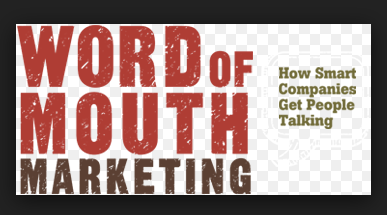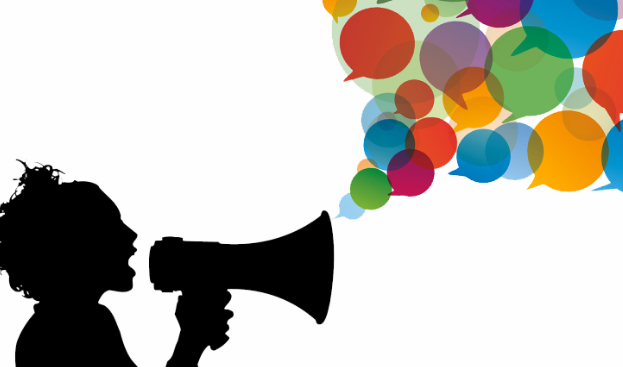At its core, building winning word-of-mouth marketing is simply to spread ideas that help your business and not destroy your word-of-mouth. It’s putting material out there that by its very nature attracts attention and discussion.

Perhaps the most objective way to look at the practice of this marketing is to examine the research of some highly intelligent folks who have dedicated years to deciphering the common elements of viral content.
You can’t say it. You have to get consumers to say it to each other.
Below, I’ll dissect some of my favorite research from an associate professor at the Wharton School of Business, as well as examine some classic word-of-mouth marketing examples to see what lessons can be had from some very successful campaigns.
Defining word-of-mouth marketing
In defining word of mouth, guerrilla, or viral marketing, many creative descriptions have been put forward.
At its core, this form of marketing is simply getting people to talk about you in a way that helps market your business or cause. It’s putting material out there that by its very nature attracts attention and is talked about. Here is how to win word-of-mouth marketing.
Why word of mouth?
The importance of building a brand through word of mouth (WOM) can’t be underestimated. In an Ad Age article, a study conducted by MarketShare proved that this type of marketing drives business. They studied several different brands and found that Word of Mouth increased marketing effectiveness by up to 54%.
Until this study, it was difficult to measure if what people say to each other about their brand experience has a direct effect on sales. We know WOM has a direct effect because we experience it ourselves in everyday life.
When we move to a new area, it’s our neighbors and friends who recommend the dentist, doctor, best school, babysitter, etc. Services like Angie’s List tapped right into that age-old need of finding services that were trustworthy and economical.
Word of mouth is 10 times more effective than traditional ads.
Why? Because consumers don’t trust ads–even ads with beloved celebrities. Consumers, I argue, trust their friends. So the best way to understand word of mouth is to understand people in real-life settings.
The best method to look at the practice of word-of-mouth marketing is to examine the research of some highly intelligent folks who have dedicated years to deciphering the elements of its content.
The best we could find was from an associate professor at the Wharton School of Business, Jonah Berger, who studied some classic marketing examples to see what lessons can be had from those exemplary campaigns.
His first article to attract attention was his now famous joint paper with Katherine Milkman called What Makes Online Content Go Viral?, where Milkman and Berger found that online content often went viral when:
It was positive, dwelling on positive issues or topics.
It evoked a strong emotional reaction (joy, fear, anger).
It was practically useful.
Later, Berger would take a more in-depth look at this type of marketing in his book Contagious: Why Things Catch On.
Types of word of mouth
While word of mouth is undeniably complex and has a multitude of potential origins and motivations, there are three forms of word of mouth that marketers should understand: experiential, consequential, and intentional.1
Experiential

Experiential word-of-mouth is the most common and powerful form, typically accounting for 50 to 80 percent of word-of-mouth activity in any given product or service category. It results from a consumer’s direct experience with a product or service, largely when that experience deviates from what’s expected. (Note that consumers rarely complain about or praise a company when they receive what they expect.)
Complaints, when airlines lose luggage, are a classic example of experiential word of mouth, which adversely affects brand sentiment and equity, reducing both receptiveness to traditional marketing and the effect of positive word of mouth from other sources.
Consequential
Marketing activities also can trigger word of mouth. The most common is what we call consequential word of mouth, which occurs when consumers directly exposed to traditional marketing campaigns pass on messages about them or the brands they publicize.
The impact of those messages on consumers is often stronger than the direct effect of advertisements because marketing campaigns that trigger positive word of mouth have comparatively higher campaign reach and influence. Marketers need to consider both the direct and the pass-on effects of word of mouth when determining the message and media mix.
Two things supercharge the creation of positive consequential word of mouth: interactivity and creativity. They are interrelated and particularly important for brands in relatively low-innovation categories that often struggle to gain consumer attention
Intentional
A less common form of word of mouth is intentional—for example when marketers use celebrity endorsements to trigger positive buzz for product launches. Few companies invest in generating intentional word-of-mouth, partly because its effects are difficult to measure and because many marketers are unsure if they can successfully execute intentional word-of-mouth campaigns.
Intentional word-of-mouth campaigns revolve around identifying influentials that become brand and product advocates. Of course, companies can’t precisely control what consumers tell others. But ambitious marketers can use word-of-mouth equity insights to shift from consequential to intentional campaigning.
Companies unable to target influentials precisely must take a different approach. While Red Bull, for example, can’t send text messages to specific consumers, it has successfully deployed science to orchestrate effective intentional word-of-mouth campaigns. After identifying influentials among its different target segments, the energy-drink company ensures that celebrities and other opinion makers seed the right messages among consumers, often through events.
What marketers need for all three forms of word of mouth is a way to understand and measure its impact and financial ramifications, both good and bad.
One of our favorite word-of-mouth experts is Andy Sernovitz. Here we will take an excerpt from his book – Word of Mouth Marketing: How Smart Companies Get People Talking.
Word of mouth has been with us forever. What’s new is the second M—marketing.
Word- of mouth exists. Word-of-mouth marketing is working with it toward a marketing objective. Word-of-mouth marketing is a new specialty that is as actionable, trackable, and plannable as any other form of marketing.
Word of mouth is a natural conversation between real people. Word-of-mouth marketing is working within this conversation so people are talking about you.
Word of mouth is about genuine consumer conversations. Word-of-mouth marketing is joining that conversation and participating in it—but never, ever manipulating, faking, or degrading its fundamental honesty in any way.
If word-of-mouth has been around forever, there must be some reason why marketers suddenly began talking about it.
Here’s what’s new: We can finally do something about it.
It’s evolved from anecdotal to actionable, from something that just happens to something you can influence. Word-of-mouth marketing has become the fastest-growing form of marketing because we now have the tools and knowledge to work with it.
Until a few years ago, we sort of wished that good word of mouth would just happen on its own. You could have a special sale or do some silly publicity stunt and hope people would talk.
Now we can work with people who want to talk about us and help their ideas reach a new audience. We can provide a platform so more people hear what our fans are saying. We can use the internet to give far more visibility to a conversation that has always been happening.
We’ve also gained the ability to track and measure that conversation. Thanks in part to blogs and the web, we can see who is saying what about us. We can listen to the conversation and understand it. We can figure out who is talking and why they are talking. It’s not such a mystery anymore.
In many cases, word-of-mouth marketing isn’t actually about marketing at all. It’s about great customer service that makes people want to tell their friends about you. It’s about fantastic products that people can’t resist showing to everyone.
This is called organic word of mouth—word of mouth that springs naturally from the positive qualities of your company. Many experts would argue that this is the only legitimate form of word of mouth. The opposite concept is called amplified word of mouth—word of mouth that is started by an intentional campaign to get people talking.
How to create word-of-mouth campaigns
The first thing you need to know about word-of-mouth marketing is this: generating consumers to talk about your business isn’t as random as you think. There’s a science to creating a marketing buzz, and it’s something you can learn to do.
